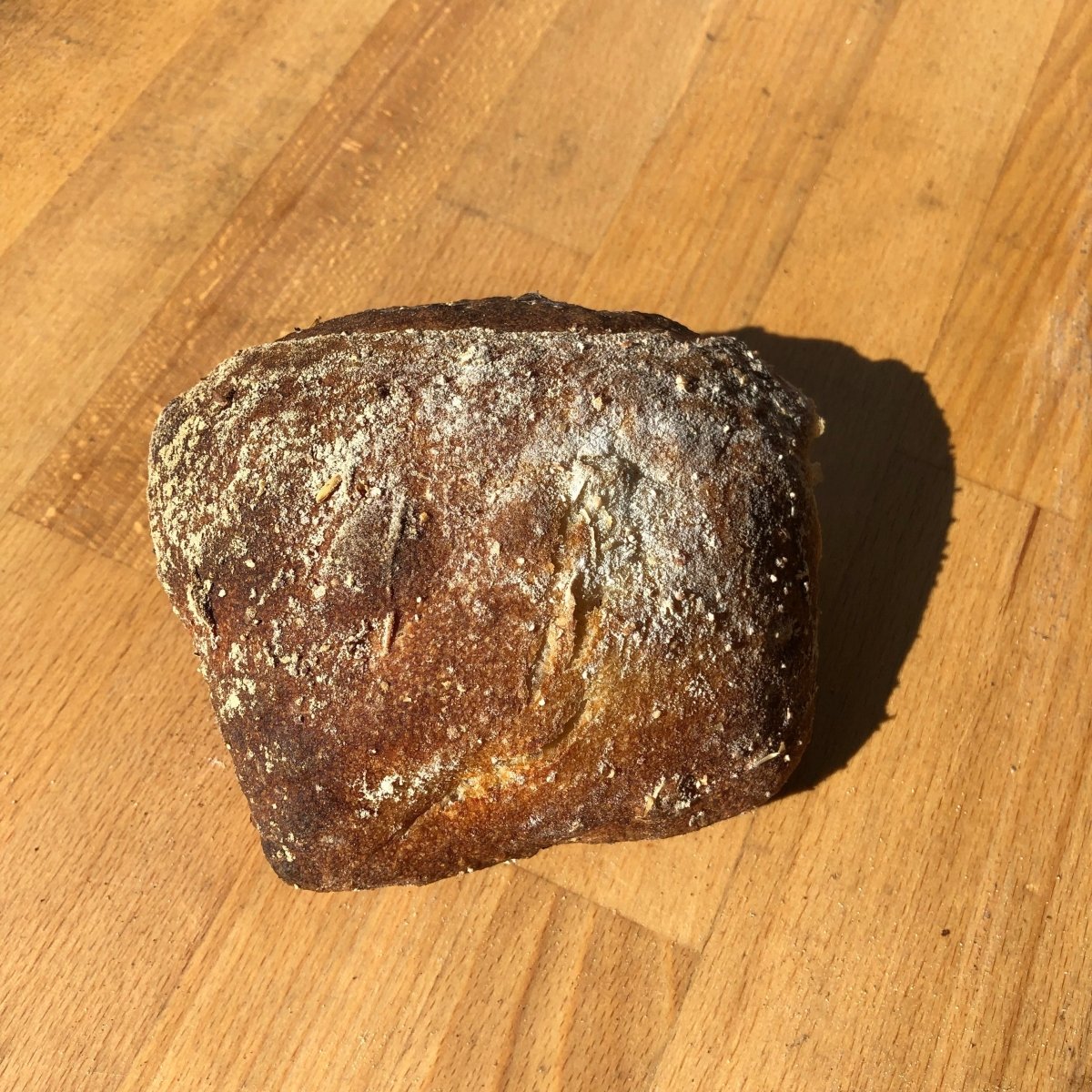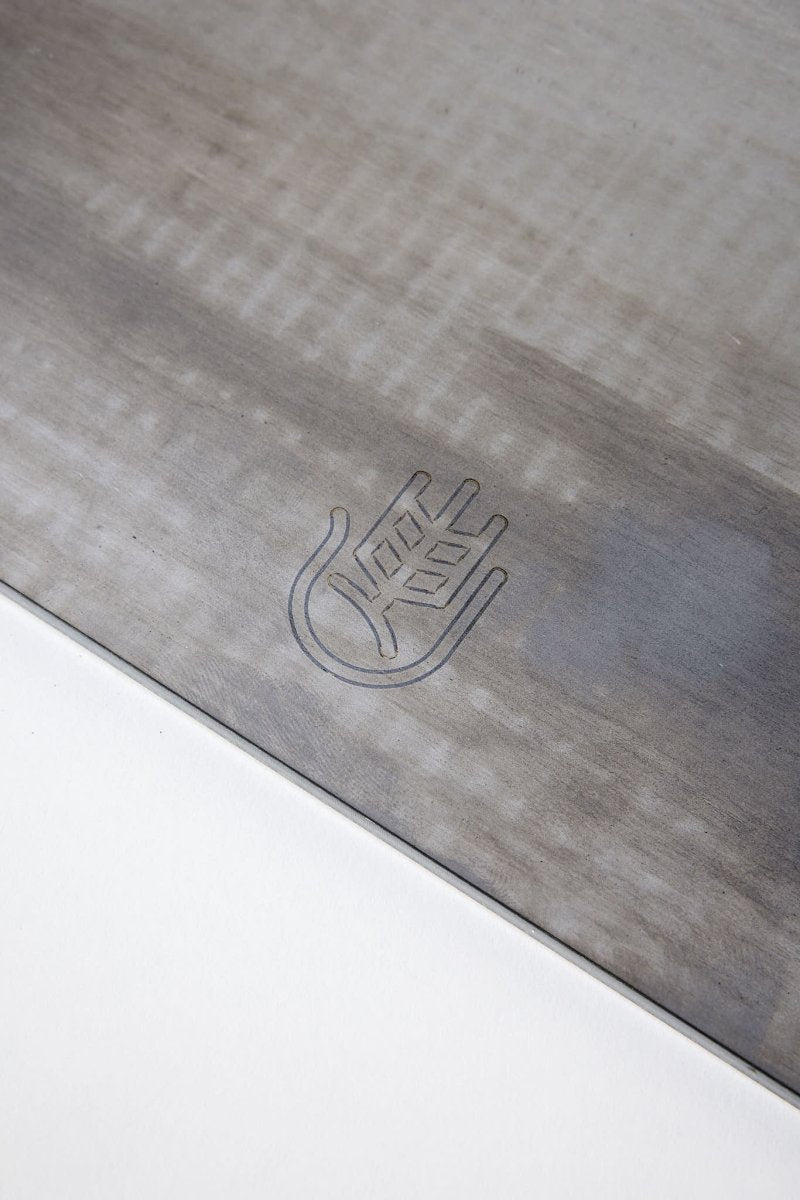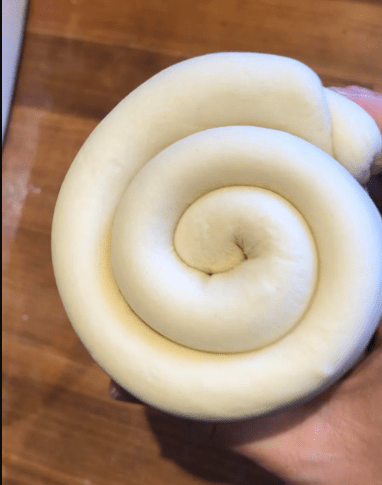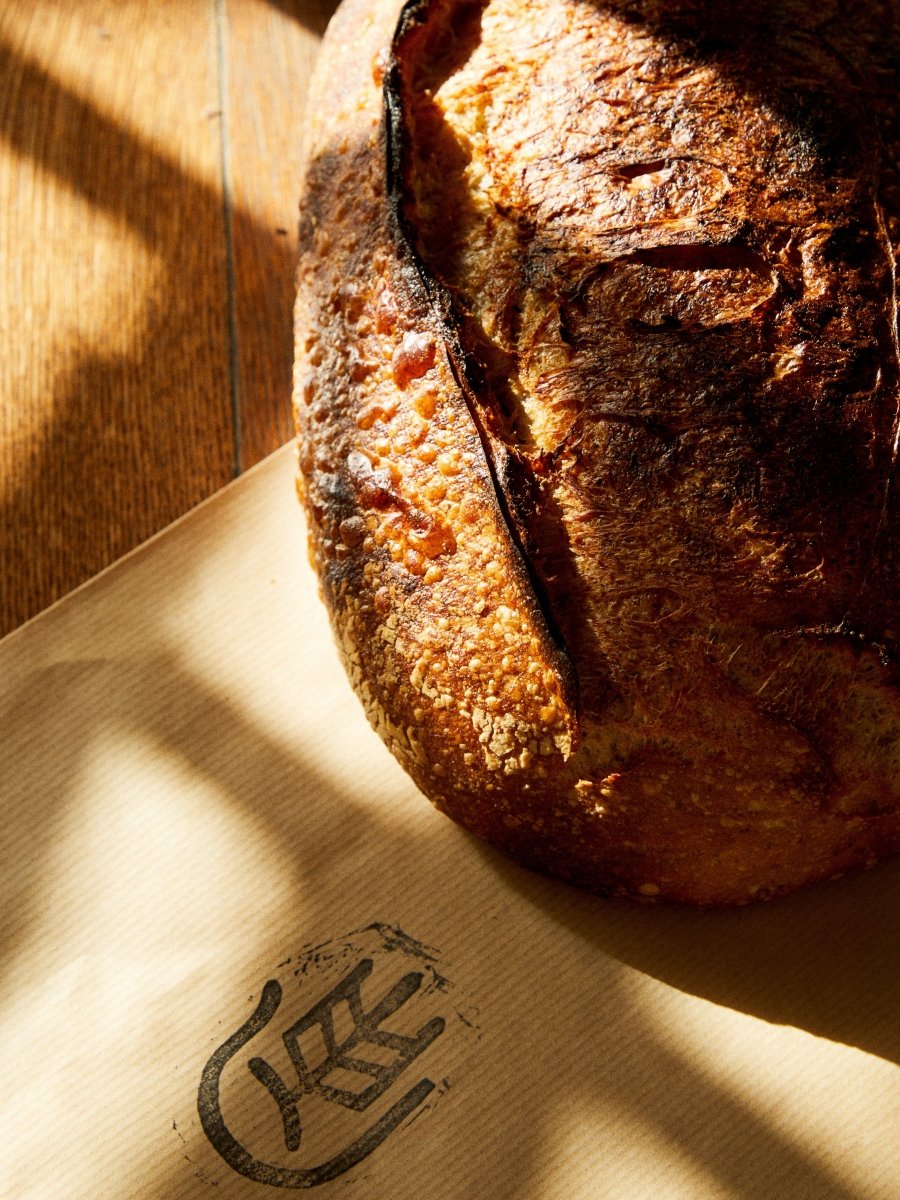For three years, we baked sourdough rolls daily at a boarding school before opening our bakery. This hands-on experience gave us invaluable insight into working with highly hydrated dough and led to experimentation with unconventional ingredients. Now, we're sharing our secrets to perfect sourdough rolls, combining a thin, almost glassy crust with a soft, airy interior.
Watch our video for tips and tricks on baking sourdough rolls, including demonstrations of various techniques.
The Secret to Perfect Sourdough Rolls
For us, the perfect sourdough roll is all about the contrast between the crisp, almost glassy crust and the soft, airy crumb. We achieve this by combining the right flour blend, high hydration, and precise technique.
Flour Blend and Hydration
If you want to incorporate more whole grain flour, we recommend using a strong base flour, such as “Mariagertoba link”. This strong flour allows us to add our preferred whole grains while maintaining the desired crust and crumb. Remember that different flours absorb different amounts of water depending on the milling process and grain quality. In this recipe, we start with 78% hydration. If you are using high-quality flour, you can easily increase the hydration. We have often made sourdough rolls with 100% hydration, which is easily achievable if you use more whole grain in your recipe as well.
Sourdough Roll Recipe
Ingredients:
- 350g strong bread flour
- 150g whole grain flour (e.g., Purpurwheat or Ryewheat - product link)
- 380g water
- 100g sourdough starter (at its peak, bubbly and vigorous)
- 12g salt
Instructions:
- Autolyse: Combine water, flour, and sourdough. Use the lowest speed on your stand mixer for 10 minutes. Let the dough rest for 15-30 minutes.
- Add Salt: Mix the salt into the dough on low speed for 8 minutes. Increase the speed to maximum for the last 2 minutes until the dough pulls away from the sides of the bowl. Let the dough rest for 15 minutes before transferring it to an oiled container.
- First Rise (Bulk Fermentation): Let the dough rise at room temperature until it has roughly doubled in size. You can mark the desired proofing level on your proofing box. The dough can now be refrigerated at 1-3°C (34-37°F), or you can bake the same day if the dough has at least doubled in size. If baking the same day, chilling the dough before shaping can make it easier to handle.
- Shaping and Baking: The next day, turn the dough out onto a floured surface. You can roll the dough in seeds or grains. Divide the dough into pieces and bake them on a baking tray at 240-260°C (464-500°F) for 12 minutes. Add steam at the beginning of baking. This can be done in various ways – check out our YouTube channel for tips and tricks!






Share on socials:
Hearty & Wholesome: 100% Whole Grain Sourdough Rye Bread